The Trojan War
27 The Greeks

The Gods
The gods that choose to side with the Greeks were Hera, Athena, Poseidon, Hephaestus, and Thetis. The reasons for this were various. Hera and Athena swore vengeance against Paris after he decreed that Aphrodite was more beautiful than them; Thetis’ only son, Achilles, fought for the Greeks; and Poseidon and Hephaestus’ choices are never clearly explained.
Agamemnon
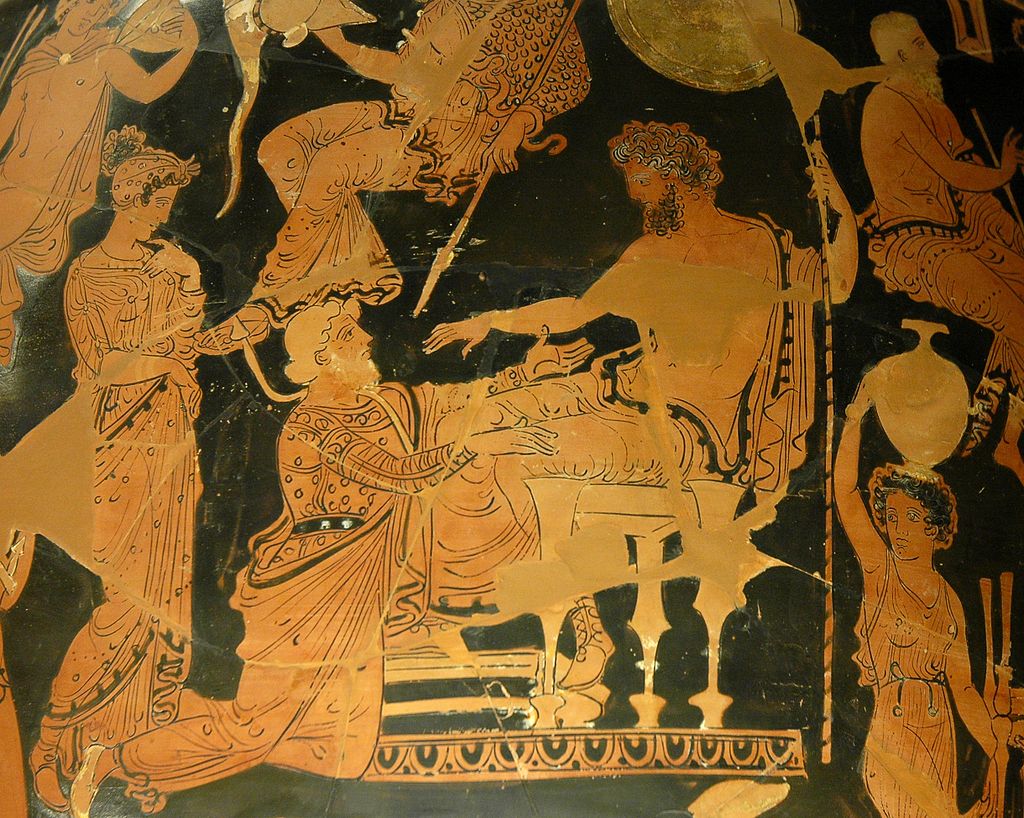
Eldest son of Atreus, king of Mycenae, brother of Menelaos, and supreme leader of the Greek expedition. His enslavement of the daughter of the priest of Apollo, Chryses, is the action that sets in motion both the pestilence that opens the Iliad, and Achilles’ refusal to participate into battle for most of the last year of the siege.
Menelaus
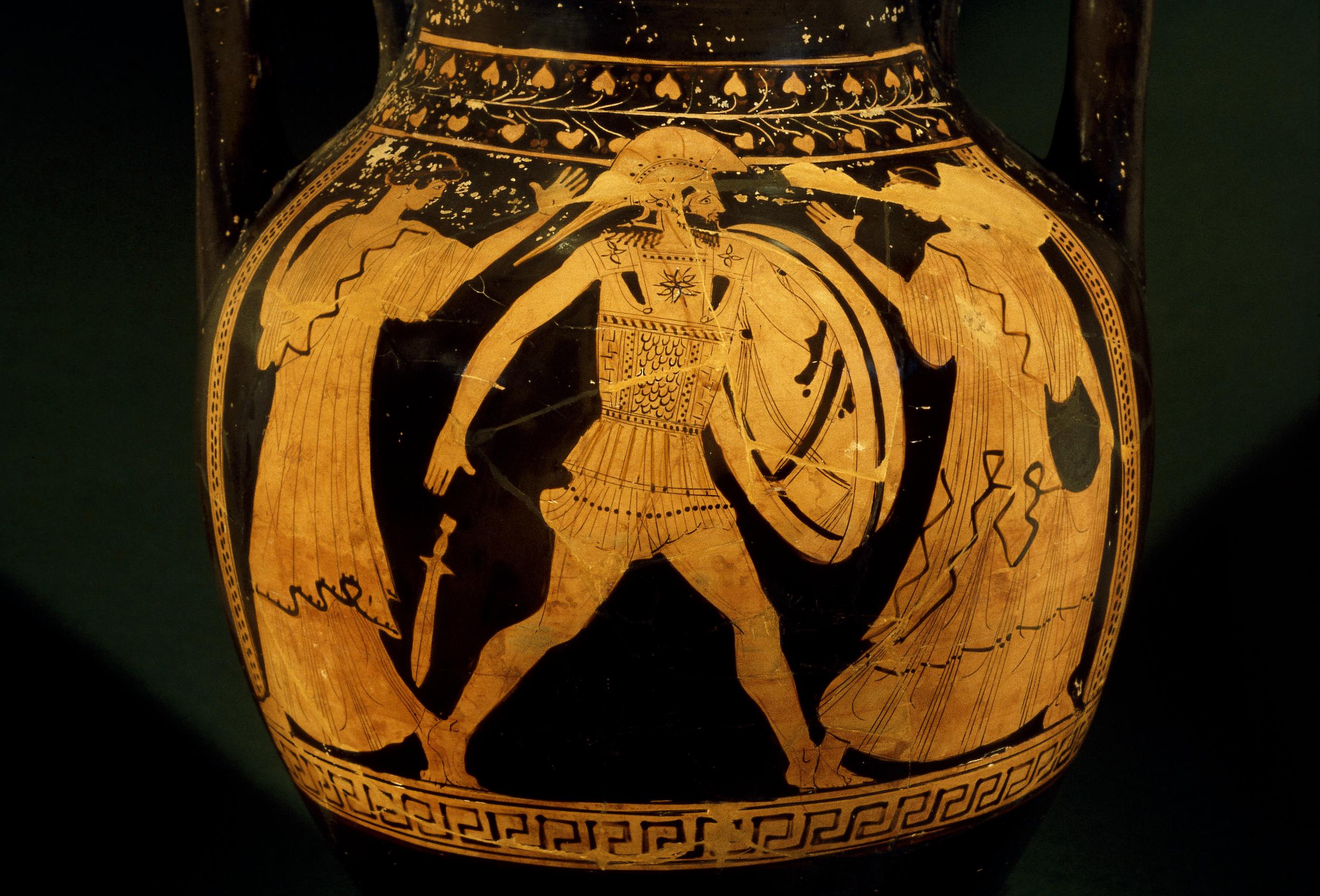
Youngest son of Atreus, king of Sparta, brother of Agamemnon, and husband of Helen. His attempt to conclude the war with a single combat against Paris is nullified when Paris is spirited away by Aphrodite. At the end of the war he does not kill Helen, as other leaders had encouraged him to, but takes her back home instead.
Achilles
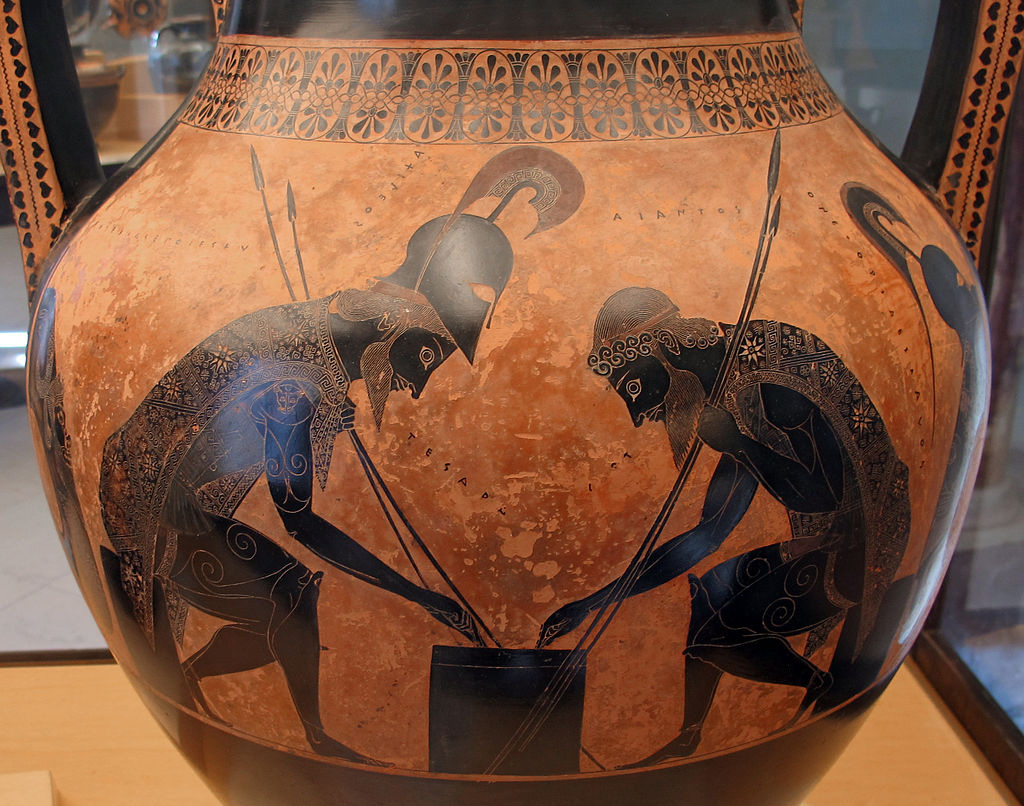
Demigod, son of Peleus and the Nereid Thetis, leader of the Myrmidons, the strongest and most feared of the Greeks. His second set of armour and weapons, forged for him by Hephaestus himself, including a fabulous round shield, becomes a coveted prize for the other Greek leaders after his death.
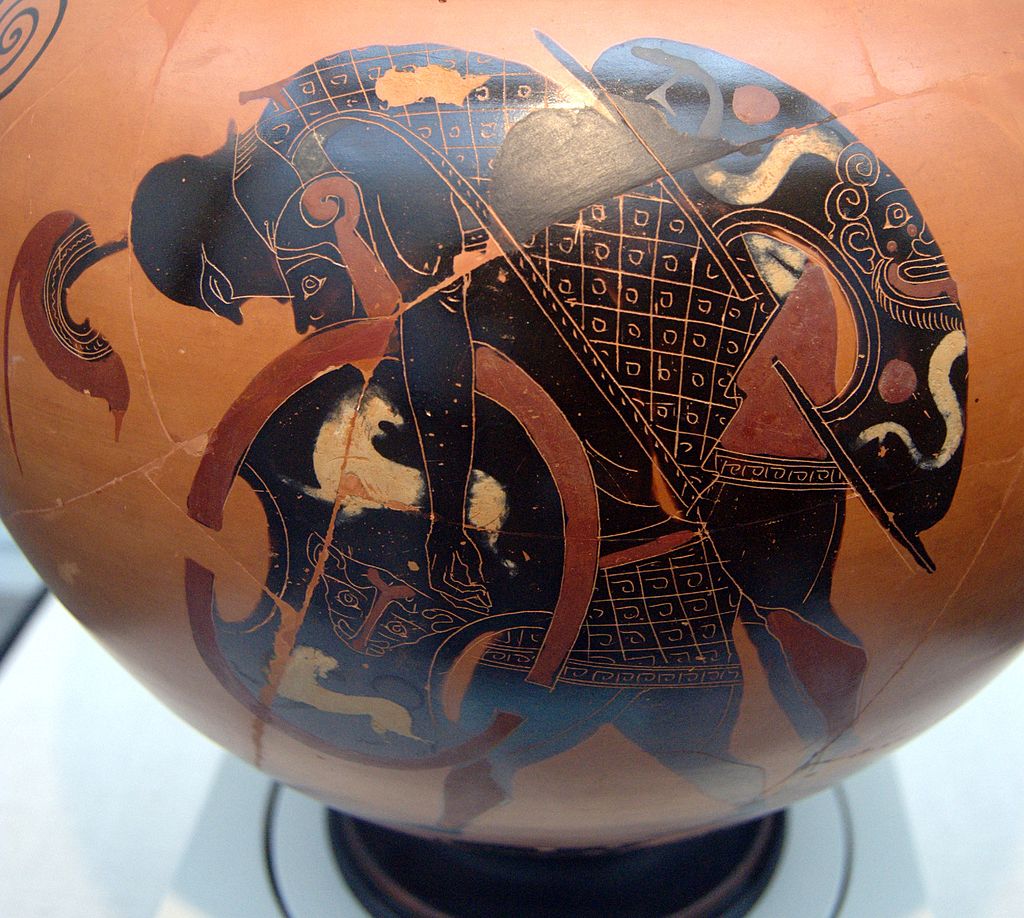
Patroclus
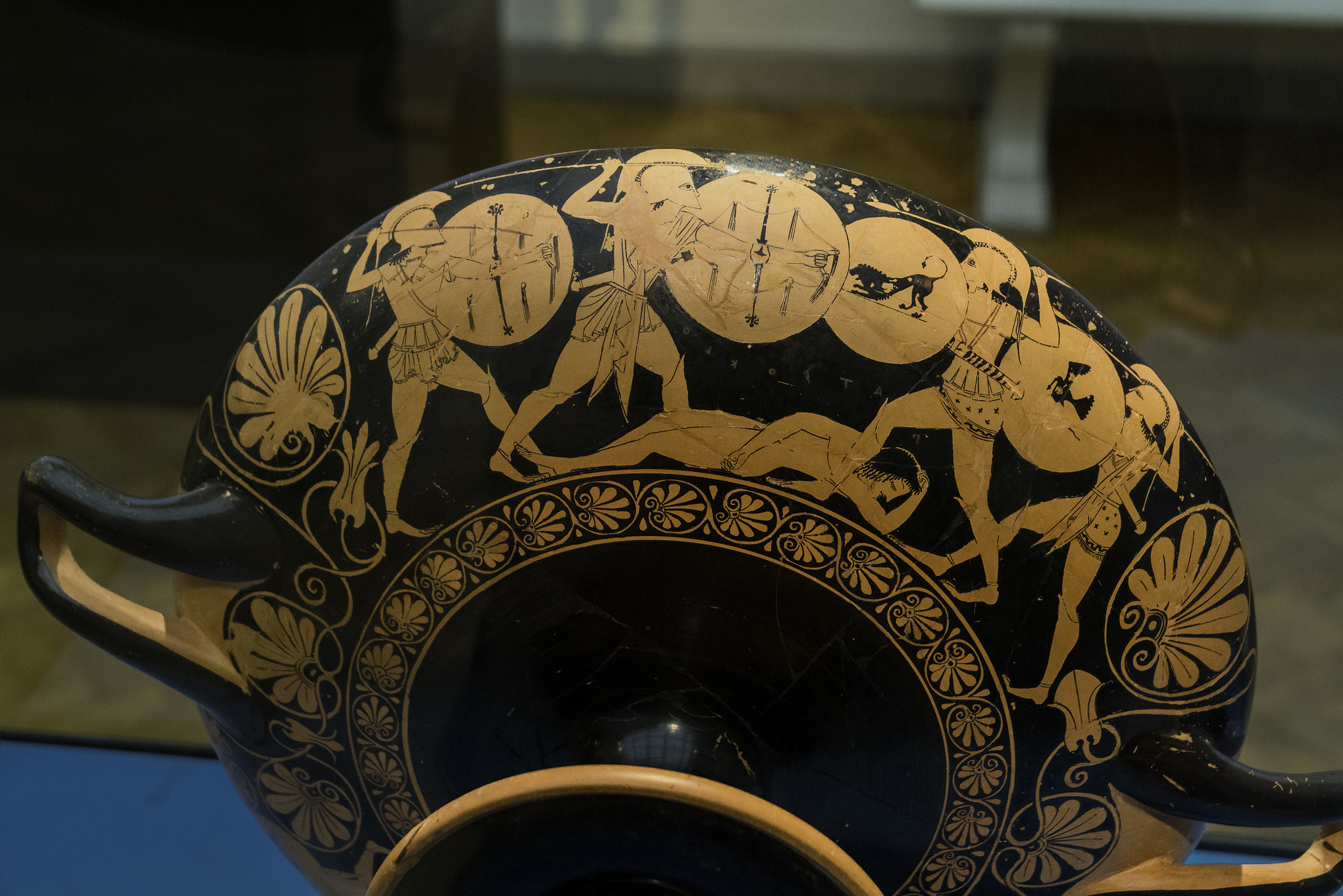
Son of Menoetius, exiled to Phthia after killing a man. Probable lover of Achilles (although never explicitly stated in the Iliad) and commander-in-second of the Myrmidons, he offers to join the battle pretending to be Achilles and wearing his armour and is killed by Hector with the help of Apollo.
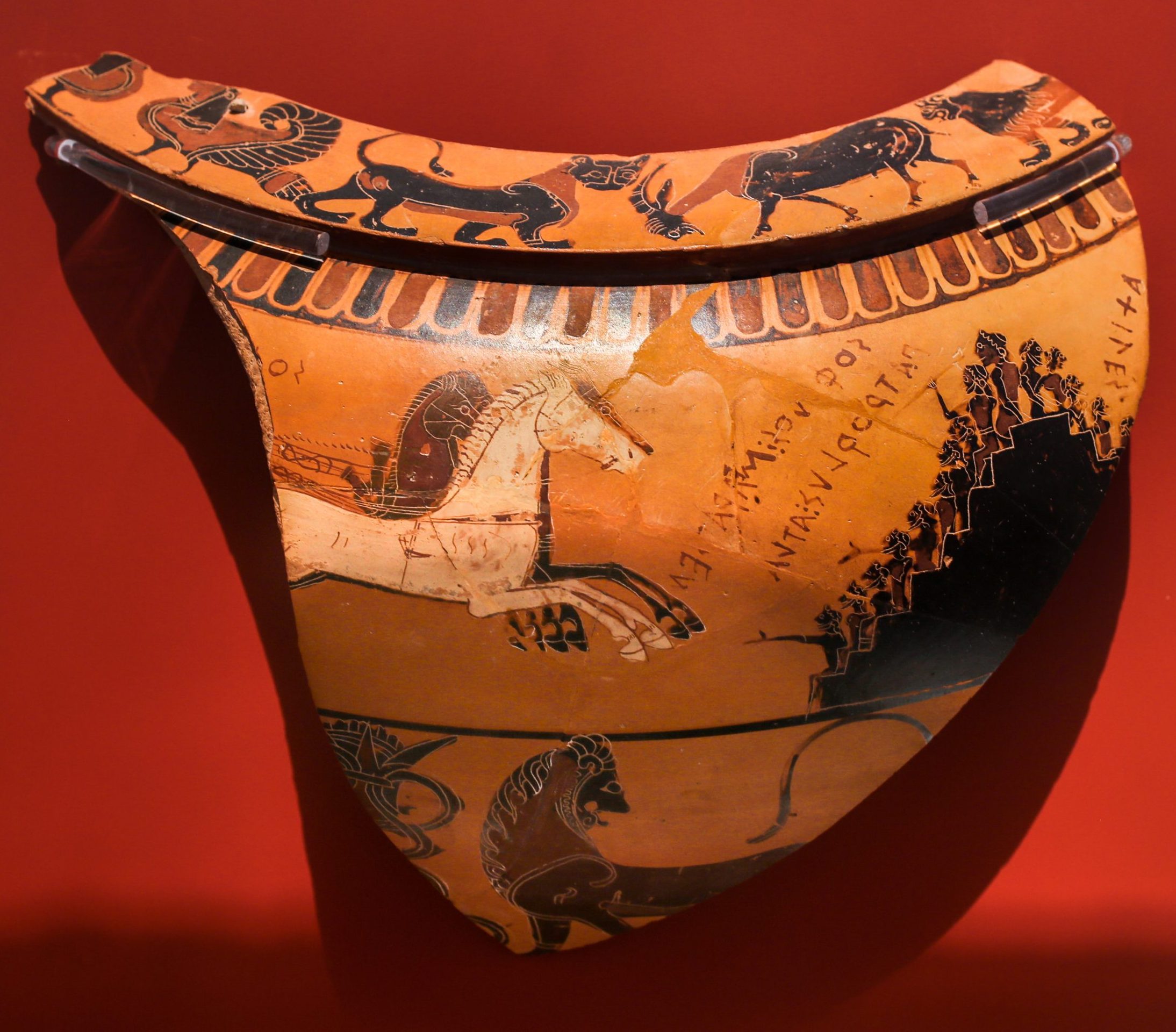
Ajax the Greater
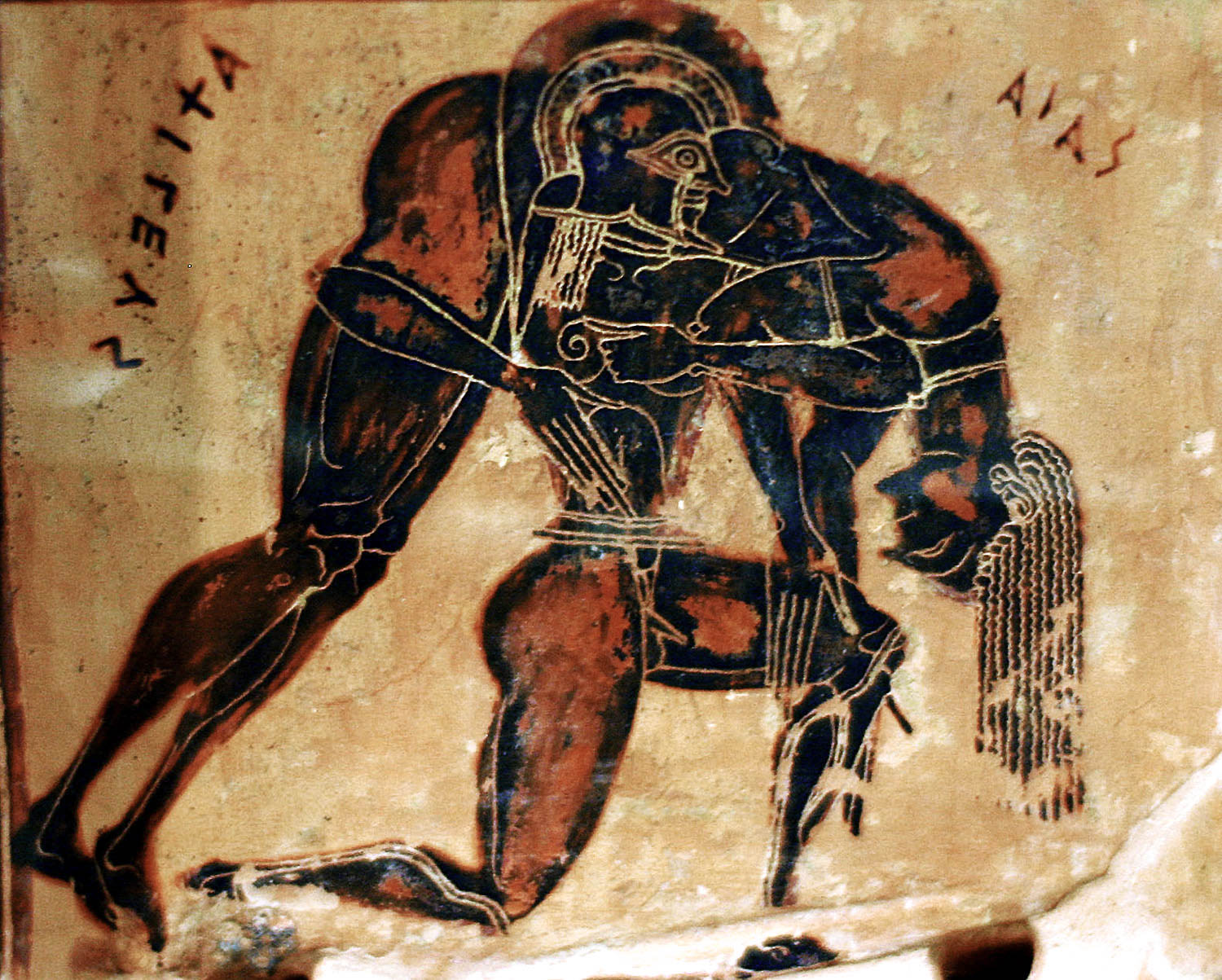
Son of Telamon, prince of Salamis, the mightiest of the Greeks (he is often referred to as ‘bulwark of the Achaeans’). Bears a giant tower shield made of seven layers of oxhides and bronze which he uses to protect himself and his half-brother, the bowman Teucer.
Odysseus
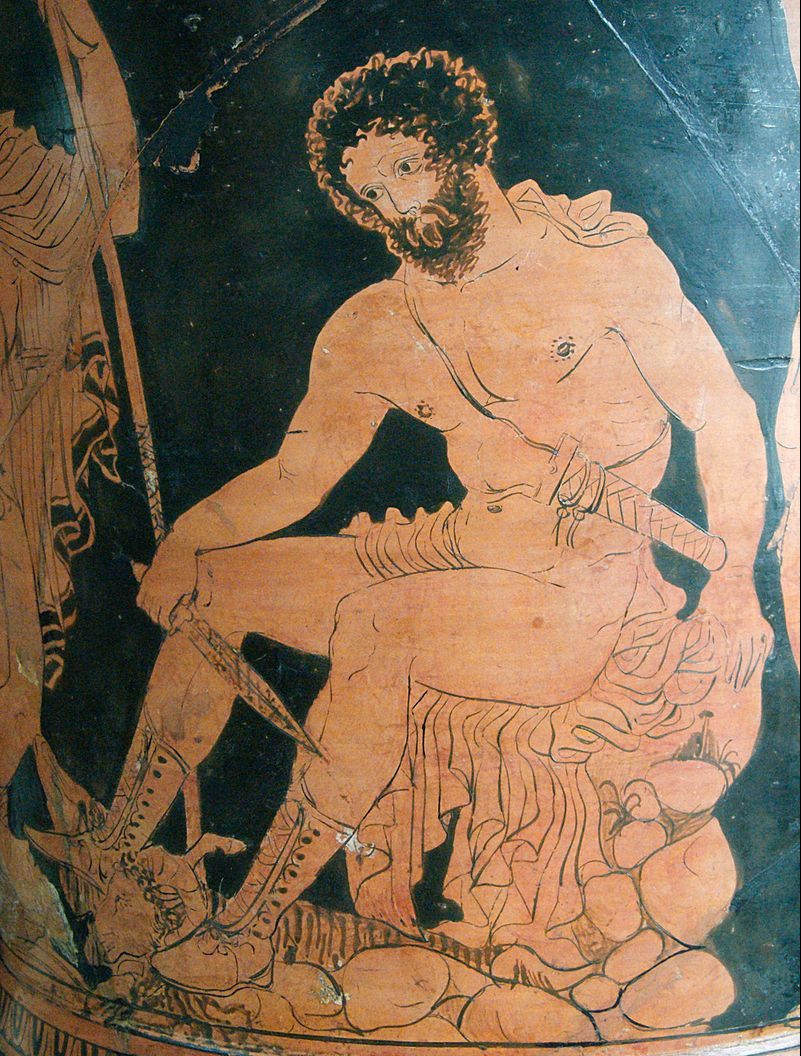
King of the small kingdom of Ithaca, renowned for his cunning ways, devious mind, and archery skills. He is the one who devises the stratagem of the Trojan Horse (with the help of Epeius and Athena), and obtains the armour of Achilles after the latter’s death.
For further discussion of Odysseus, see chapter 30.
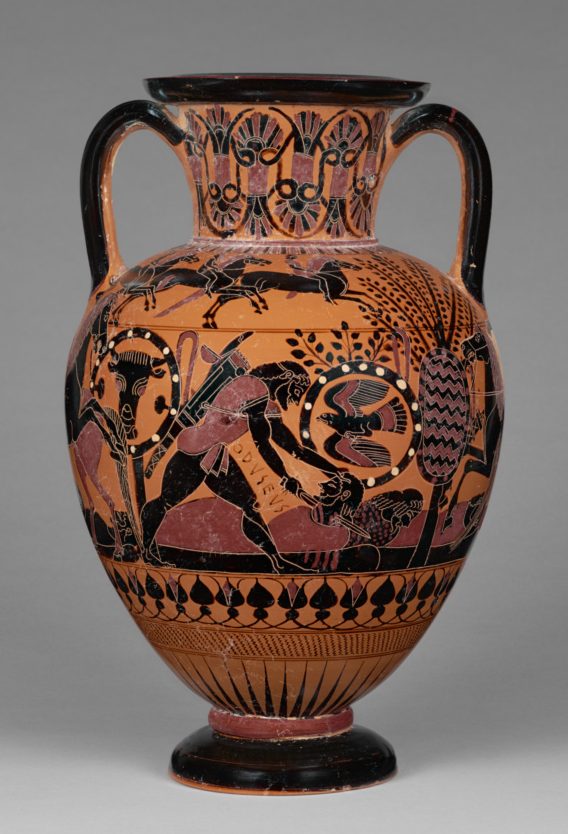
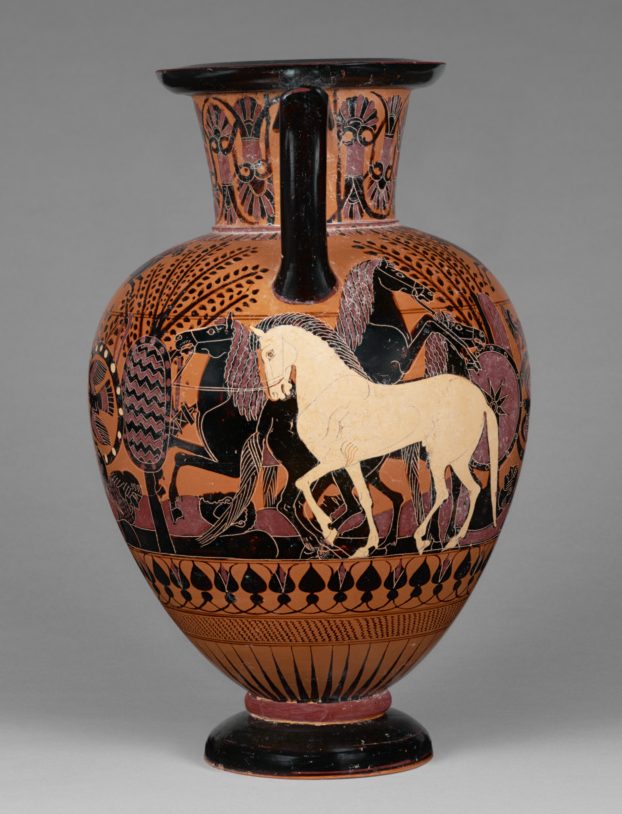
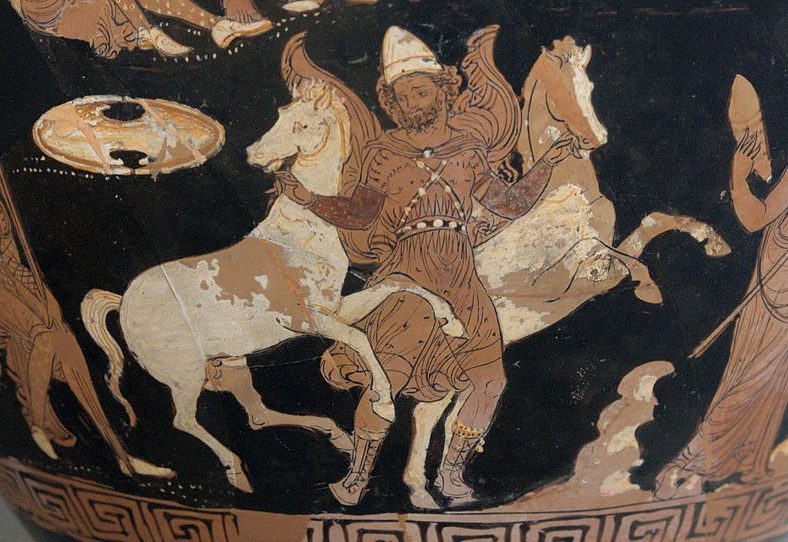
Diomedes
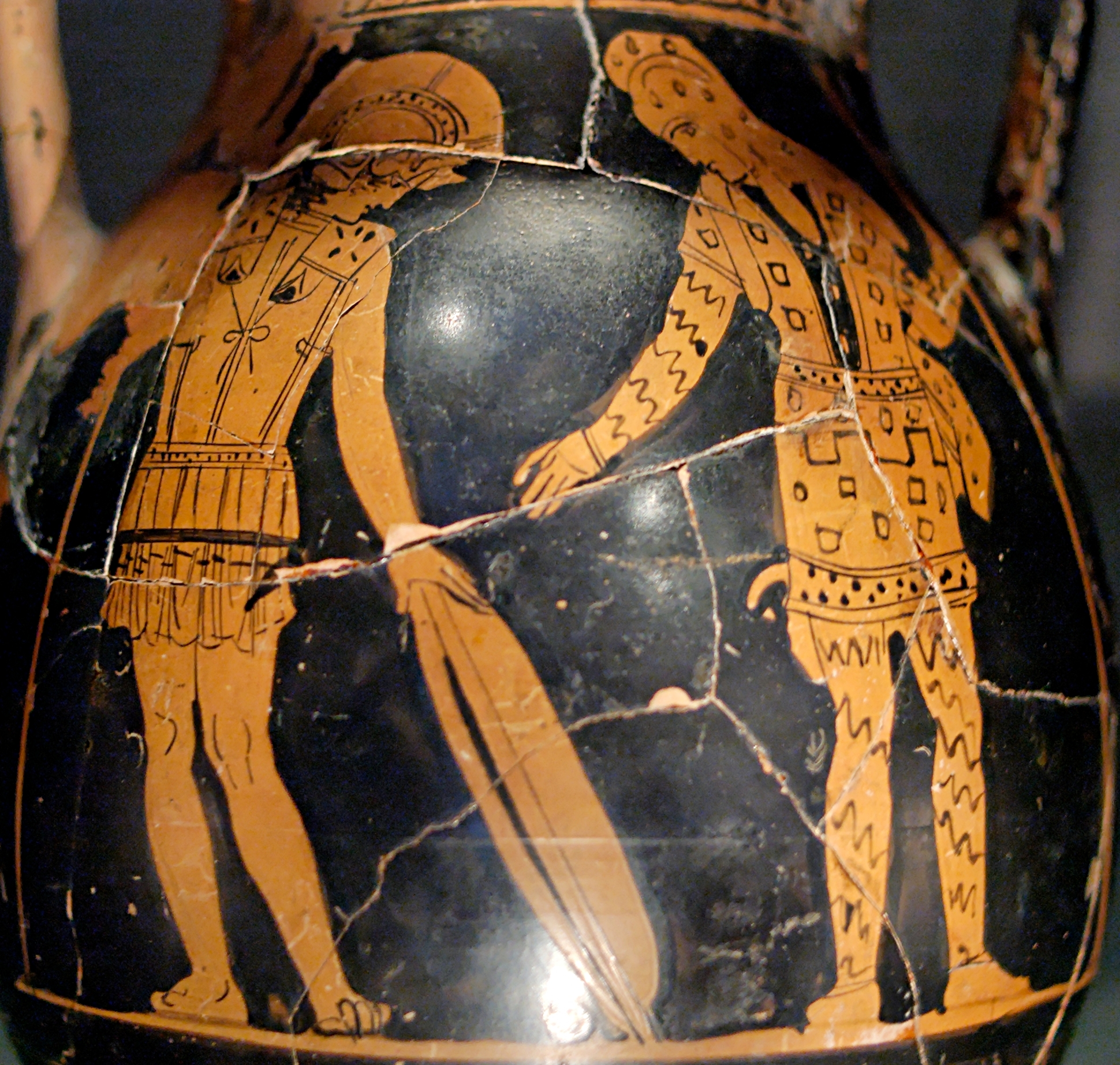
Son of the famed warrior Tydeus, he is one of the youngest Greek leaders, and the most feared after Achilles. Greatly favoured by Athena, who allows him to spot the gods on the battlefield, he is often the partner in crime of Odysseus, with whom he steals the horses of king Rhesus and the sacred Palladion.
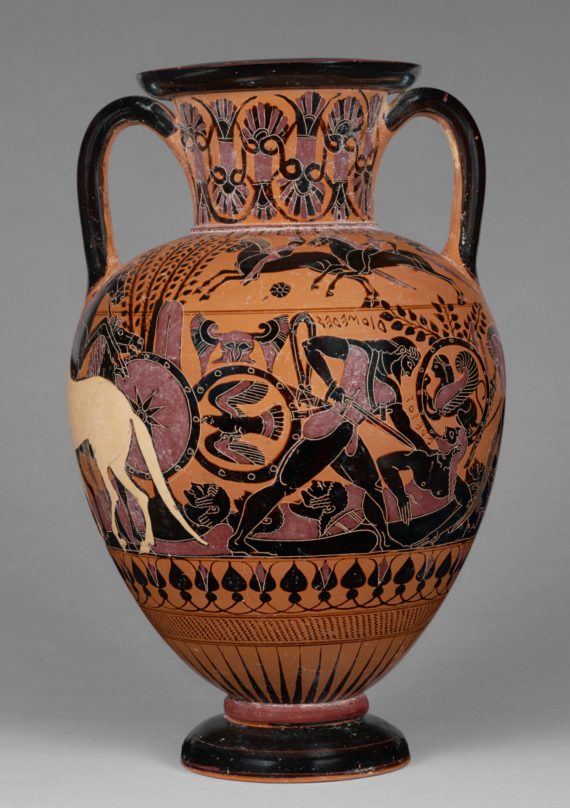
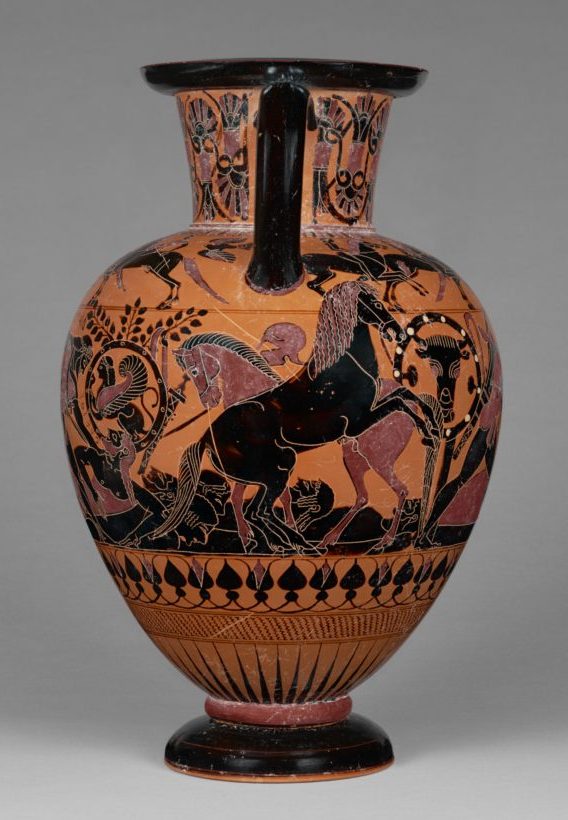
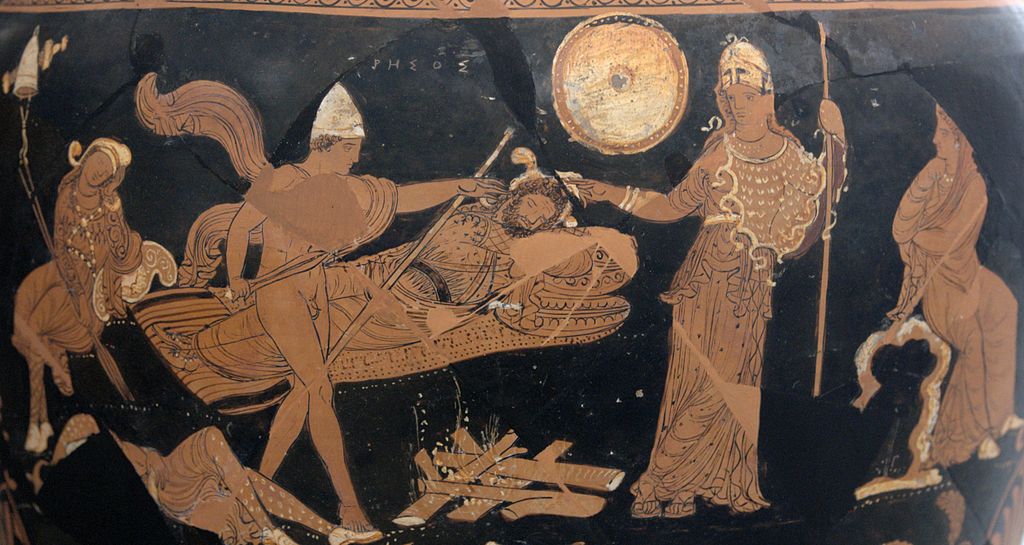
Neoptolemus
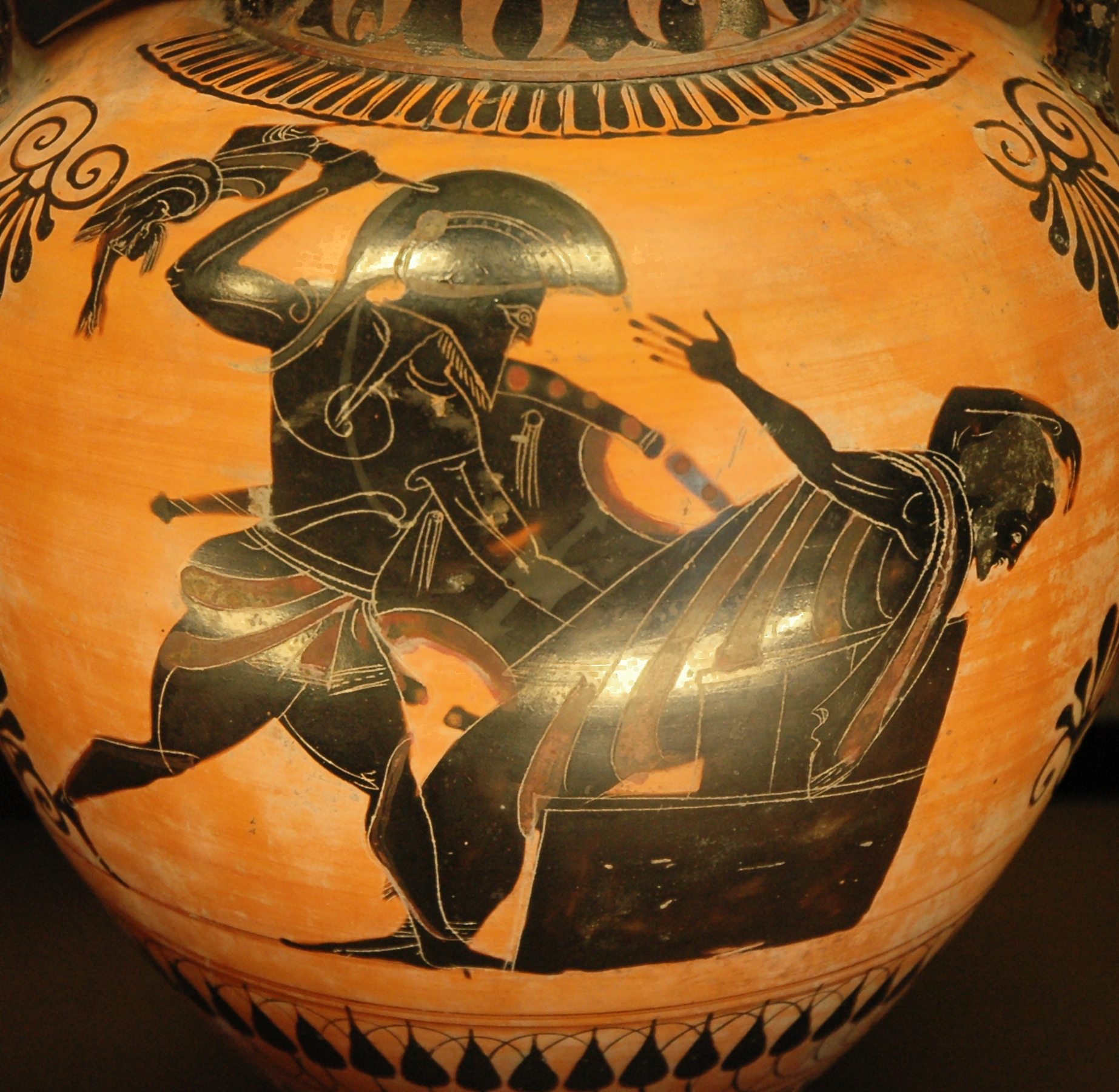
Young son of Achilles, taken to Troy after his father’s demise. Once the city falls, he commits dreadfully violent acts against the royal family and the rest of the citizens, and personally sacrifices princess Polyxena on his father’s tomb.
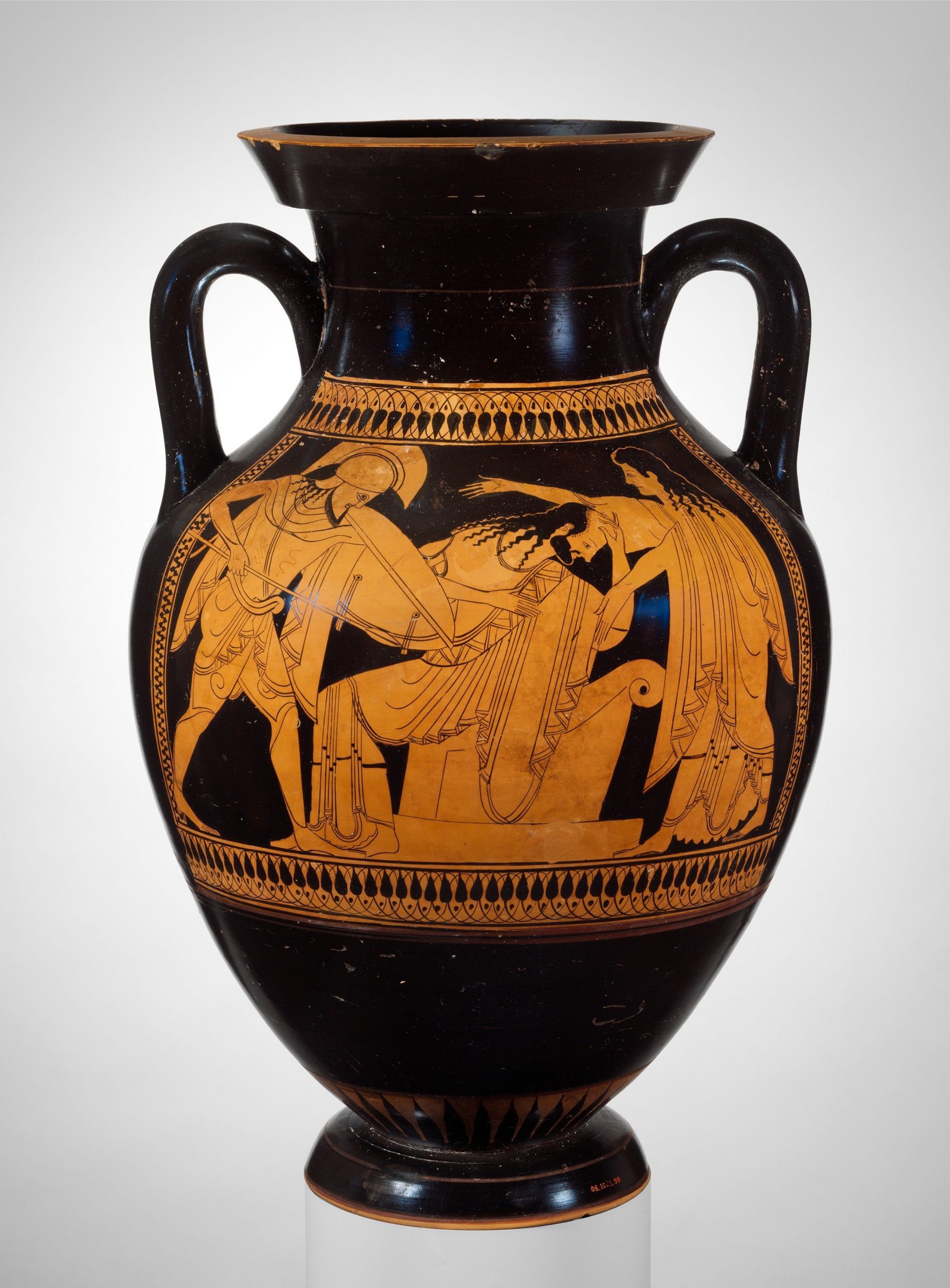
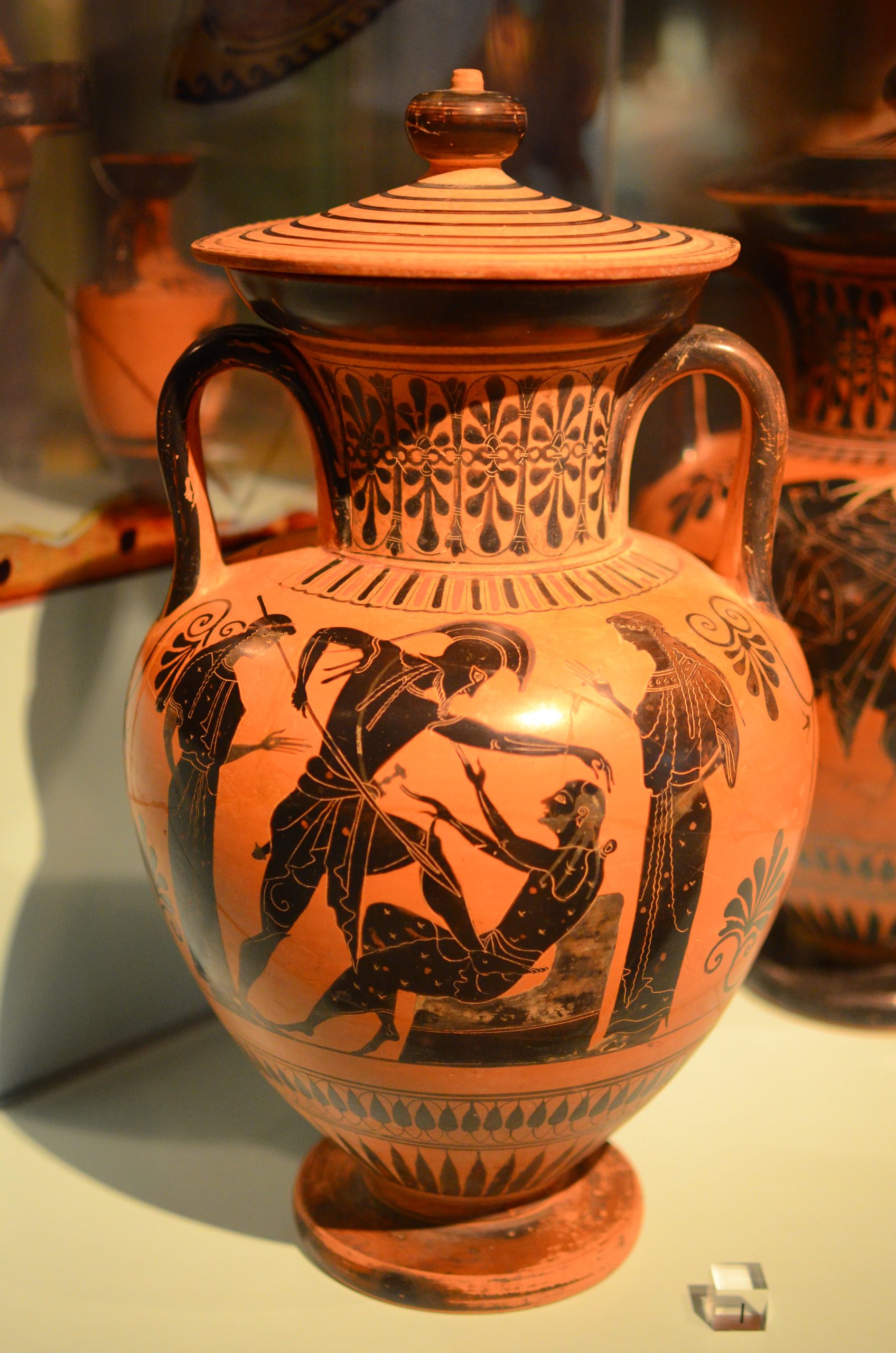
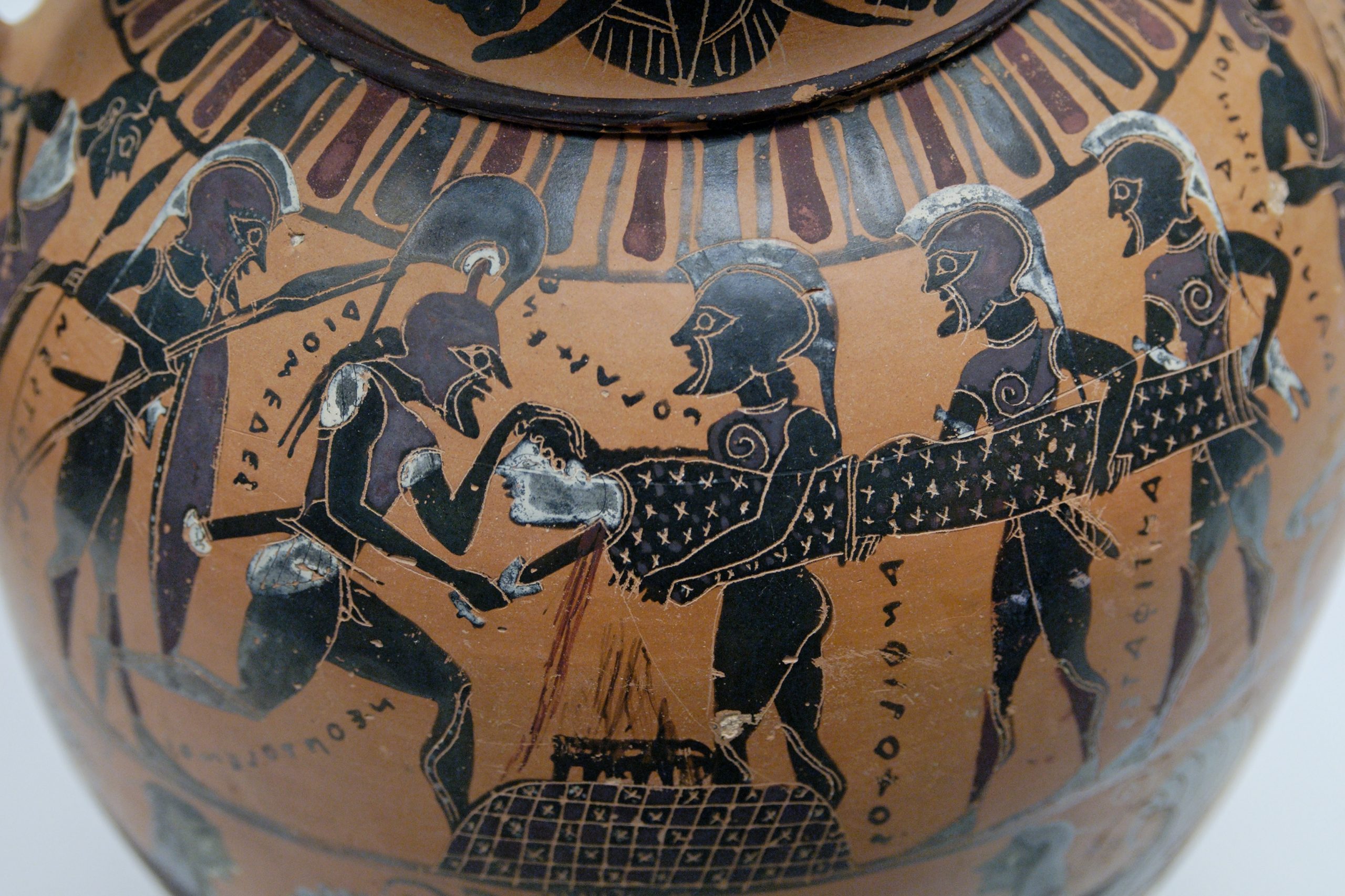
Media Attributions
Media Attributions
- Akhilleus Patroklos Antikensammlung Berlin F2278 © Bibi Saint-Pol is licensed under a Public Domain license
- Chryses Agamemnon Louvre K1 © Jastrow is licensed under a Public Domain license
- Amphora 1837,0609.71 © the British Museum is licensed under a CC BY-NC-SA (Attribution NonCommercial ShareAlike) license
- Exekias, anfora con achille e aiace che giocano a dai, castore e polluce, da vulci, 540-30 ac ca. 03. © Sailko is licensed under a CC BY-SA (Attribution ShareAlike) license
- Aias body Akhilleus Staatliche Antikensammlungen 1470 side A © Bibi Saint-Pol is licensed under a Public Domain license
- From Iliad X – Patroklos’ Death by Oltos . © Egisto Sani is licensed under a CC BY-NC (Attribution NonCommercial) license
- Sophilos – ABV 39 16 – funerary games of Patroklos – animal friezes – Athens NM 15499 © ArchaiOptix is licensed under a CC BY-SA (Attribution ShareAlike) license
- Aias Carrying Body of Achilles – detail from Francois vase c 565 BCE fForence Italy Arch Museum is licensed under a Public Domain license
- Odysseus Tiresias Cdm Paris 422 n2 © Jastrow is licensed under a CC BY (Attribution) license
- Chalcidian Black-Figure Neck Amphora (Front) © J. Paul Getty Museum is licensed under a Public Domain license
- Chalcidian Black-Figure Neck Amphora (Left Profile) © J. Paul Getty Museum is licensed under a Public Domain license
- Rhesos krater Antikensammlung Berlin 1984.39 n3 © Bibi Saint-Pol is licensed under a Public Domain license
- Diomedes Glaucus MAR Gela © Jastrow is licensed under a Public Domain license
- Chalcidian Black-Figure Neck Amphora (Back) © J. Paul Getty Museum is licensed under a Public Domain license
- Chalcidian Black-Figure Neck Amphora (Right Profile) © J. Paul Getty Museum is licensed under a Public Domain license
- Rhesos krater Antikensammlung Berlin 1984.39 n2 © Bibi Saint-Pol is licensed under a Public Domain license
- Amphora death Priam Louvre F222 © Jastrow is licensed under a Public Domain license
- Terracotta amphora (jar) © the Metropolitan Museum is licensed under a Public Domain license
- Greek vase of Leagros Group in RMO AvL © Alexander Van Loon is licensed under a CC BY-SA (Attribution ShareAlike) license
- Sacrifice Polyxena BM GR1897.7-27.2 © Jastrow is licensed under a CC BY (Attribution) license

